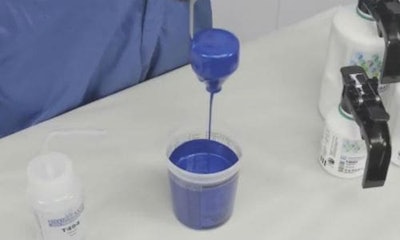
Mississauga, Ontario — April 23, 2017 — PPG has released a video tutorial on checking waterborne viscosity and making adjustments to the mix to ensure good results. According to the company, viscosity is one of the most important aspects of waterborne basecoat to understand before beginning a refinish repair. Proper viscosity helps to ensure fast flash times, through-dry, easy blending and good colour match.
Measuring the viscosity is relatively simple and the short video walks you through the process. A viscosity cup and stopwatch are required. Simply dip the viscosity cup below the level of the paint, and time how long it takes to flow through.
PPG recommends a viscosity measurement between 23 and 28 seconds for waterborne basecoat. When measuring, look for the first “clean break” in the stream of paint coming from the bottom of the cup. If it’s longer than that, the paint is too thick, and more waterbased thinner should be added.
Check out the video below for more.





















